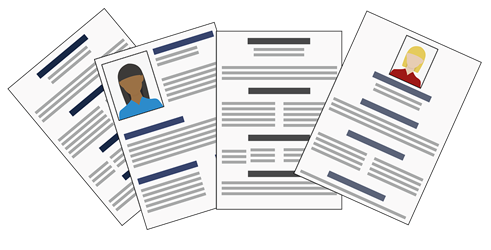Whether you’re looking for work at home or abroad, it’s common knowledge that when it comes to writing CVs, a cookie-cutter approach simply won’t work. No matter where they are based, today’s employers expect individualized résumés that highlight the candidate’s work ethic and meticulousness.
According to The Ladders, recruiters only spend 6.25 seconds examining each candidate’s CV. First impressions never get a second chance, so it’s important to ensure that every little detail is correct. This is especially the case when writing a CV that is intended for international use.

Writing an International CV
If you are firing off CVs to jobs around the world, you may find that what is considered a high-quality CV in your home country may not enjoy the same level of success when sent abroad. One reason for this may be that your CV does not adhere to the cultural norms and conventions of your chosen country.
What Can You Do to Boost Your CV’s Chances of Success?
Before applying for any job abroad, you should bone up on the job market and workplace culture in that country. Investing time and effort into doing your homework should improve your CV, impress employers and boost your odds of making it to the interview stage. If you are finding it difficult to get information online, then you could get in touch with a of a career advisor from that country.
What CV Elements Stay the Same the World Over?
Whether you’re applying for a job in Dubai or Dublin, you will always need to include the following information in your CV:
1. Your name and contact details
2. Your qualifications and skills
3. Your work history
Should You Call It a Resumé or CV?
In general, the term CV” is preferred in Europe and Latin America, whereas “resumé” is mostly used in North America and Asia. However, the two terms tend to be used interchangeably in the UK and Australia. If you are applying for jobs in the US, then it’s important to be aware that a “Curriculum Vitae” is a longer document (up to 20 pages) that is typically written by researchers, educators, or academics.
Average CV Length
As a rule, employers across the world prefer CVs that are shorter in length. A two-page CV is usually the max that an employer would accept. However, in some countries such as Saudi Arabia, Germany and Greece it is acceptable for highly-experienced candidates to submit longer documents of up to five pages.
Should You Include A Photo?
Convention as to whether or not you should include a photo of yourself on your CV differs a lot around the world, so it’s important to find out this information before ever setting pen to paper.
When to Use A Photo
Employers in many nations across Europe, the Middle East, Africa, Asia and South America expect candidate photos. If you are submitting a photograph to an employer, invest in professional photography. Remember, you can use this on your LinkedIn profile as well.
When NOT to Use A Photo
There are a number of countries (the UK, Australia and Ireland to name a few) that have anti-discrimination regulations in place which prohibit the inclusion of photos with CVs. This means that any CV that includes a candidate photo will be immediately tossed.
Personal Information
The US, UK and Australia have strict anti-discrimination and privacy laws for employers. As such, candidates are discouraged from sharing personal information such as their age, marriage status and parental status. Employers are also discouraged from asking about these details during job interviews. However, this is not the case in many countries around the world. For example, in the Middle East it is considered standard practice to include your gender, nationality, date of birth, marital and parental status on your CV.
Getting the Language Right
If applying for a job in a country that speaks a different language, prepare two copies of the CV – one in English and one in the language of the employer. Ask a native speaker to review the document for errors. If you are applying for a position in an English-speaking country, you’re not off the hook! Find out if the recipient uses British English or American English and then amend your application accordingly.
Learn more in our infographic guide, “How to Write A Resume That Crosses Borders”, below.
If you are in the process of firing off international job applications and would like to learn more about how to write an international CV, then be sure to scroll down to our infographic guide below.






Recent Comments